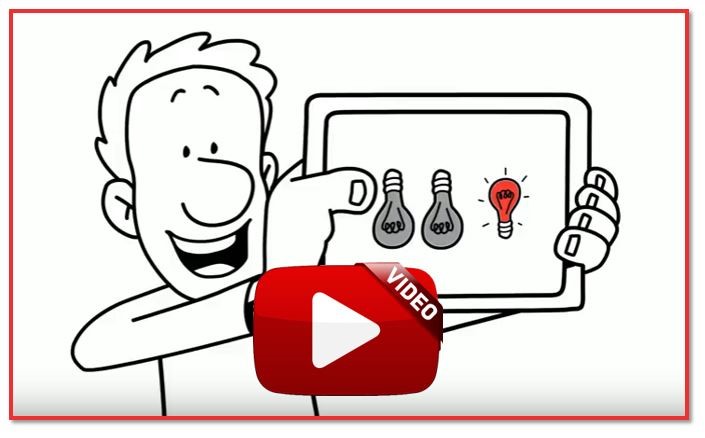2B or Not to B2B?
In the business world, we often define companies as either ‘business-to-business’ (B2B) or ‘business-to-consumer’ (B2C). Though the distinction is important, it strictly refers to transactions. When it comes to marketing, we want to have a broader perspective.
We have many clients who rightfully define themselves as B2B, because they make commercial transactions with other businesses – never with consumers. Intuitively in the B2B environment, the selling business directs its marketing resources (budget, time, people, and mindshare) toward the businesses that buy what they have to offer. That is the right thing to do, and it is necessary – But sometimes it’s not enough.
Let’s take Intel, for example: Most adult consumers have heard of Intel and know what they do. I would venture to guess, though, that not a single consumer has ever made a purchase directly from Intel. The company sells its products to other companies that make products used by other businesses and consumers. Therefore, it is safe to say then that Intel can be defined as a B2B business.
So how do consumers know about Intel? The business invests considerable resources in consumer marketing. from commercials to print ads, from public relations to requiring stickers be placed on consumer products that say, “Intel Inside”. Clearly, Intel is a B2B company that engages in B2C marketing too!
The obvious question, then, is why would a B2B company bother with B2C marketing efforts? The reason is to create a ‘pull’ by consumers in the marketplace. Continuing to use our Intel example, if consumers value the brand as a maker of reliable and fast computer processors, then they will demand – or at least prefer – buying computers with “Intel Inside”, which then helps Intel sell more of their products to their business customers.
If you are selling to other businesses that then resell what you offer to consumers as a component of their product or service, I encourage you to consider whether it makes sense to engage also in marketing activities directed to consumers, even if they never purchase directly from you.
There is more to explore regarding ‘push’ and ‘pull’ marketing in both B2B and B2C environments. I will discuss more about that in next month’s newsletter.
In the meantime, if you have questions and would like to discuss how your B2B company might sell more by applying measured B2C efforts, feel free to reach out to us!
Duke Merhavy, MBA, Ph.D.
President & Chief Marketing Officer
What Is Fractional CMO & Marketing?
Fractional CMO & Marketing is ‘Your Outsourced Marketing Department’ when you need expert marketing leadership and marketing services to accelerate growth and improve profitability, but you’re not quite ready to hire a full-time Chief Marketing Officer or your own marketing department.
Our unique arrangement is the most efficient, innovative, and cost-effective formula for you. Click on the image to the left to watch a short video.
We Help When You Need To:
- Generate more of the right kind of leads
- Close more sales faster
- Get repeat sales
- Formulate a more effective message
- Produce powerful sales tools
- Establish brand awareness, recognition, and preference
- Differentiate your brand from the competition
- Improve customer satisfaction and loyalty
- Develop lasting relationships with customers
- Introduce new products
B2B + B2C = B2M
By Ginger Mace, Editor and Producer
B2M, or business-to-many, refers to a company that sells the products they make or services they offer to not only other businesses, but also end users (or consumers) as well. In our previous article, we mentioned Intel, which promotes its products to both segments. B2M companies are in a category all their own.
There are several advantages of being a B2M company:
- The larger target market or audience for your products brings more exposure, and often the opportunity for investments.
- Word-of-mouth, one of the most desirable forms of marketing and trusted sources of experience with a product, comes from both consumers and other businesses.
- The likelihood of sustained, increased sales is boosted, since B2C widens the prospect pool considerably, and B2B buyers are not only very loyal, but also apt to sign on to long-term contracts when they find a company or product they like (which translates into a dependable, lasting source of income). In addition, B2B customers know the costs of switching to a new provider can be rather high, in terms of time spent researching a new business to buy from, negotiating the best prices and payment terms, and potential lost time and productivity if it takes time to find the correct new parts or raw materials that fit into existing processes. Therefore, it’s more likely that staying in a contract and working out any issues is preferable to B2B clientele, instead of switching to a new supplier (and starting a new relationship from scratch).
- Brand awareness is raised and happens more quickly when both B2C and B2B markets are involved, due to multiple channels of exposure. This allows the B2M business to become established faster in the marketplace.
While the benefits are many, B2M companies must take into consideration several factors:
- Because of the varied and wider prospect group, these organizations must broaden their marketing. This could mean either inclusive campaigns targeting both B2C and B2B, or separate strategies for each (which would require an increased marketing budget).
- Also adding to the marketing cost is the reality that a business thrives in the B2C market if it regularly reminds prospects of its offerings and prompts them to buy through advertising and promotions. If a B2M business is not constantly garnering this segment’s attention and reminding it of the benefits its products offers, the consumers can lose interest and a competitor can swoop in and take market share. While B2B customers are less fickle, the fact that both groups require devotion means more work and higher costs to satisfy both.
- When a B2C customer buys, unless there are issues with the product, communication with the seller usually ends there, meaning the B2M company’s resources are no longer being used. B2B clients often put more requirements on the seller, both before and after purchasing, and that requires assets. Some examples include several meetings with key personnel to address questions during the prospect’s research stage and providing written specifications that may need to be compiled, and tailoring or adapting products to meet the unique needs of each B2B customer. Another very common instance is the need for both parties to reach an agreement on price, quantity discounts, total volume to be purchased over the life of the contract, and automatic delivery dates. Each of these aspects necessitates research, calculations, weighing the revenue consequences, and more, involving many different departments within the B2M firm (such as purchasing, accounting, management, technicians or engineers, principals, investors, and customer service).
If your organization is considering marketing to both B2C and B2B customers, there is much to contemplate, some of which we have outlined in this article. We can help facilitate an in-depth discussion about this topic, and offer a complimentary marketing needs assessment – just contact us.
What Our Clients Are Saying:
“In the past decades of being a leader of a small-to-midsize business, we have worked with dozens of so-called marketing experts. None of them can hold a candle to Fractional CMO & Marketing! They are the best in the business at what they do.
From the moment we brought them on board, the entire Fractional CMO team functioned as though they were one of us, part of us. In fact, I always left our experiences believing we were the most important client in the world to them, as though we were the only client they had. They were prompt, efficient, yet thorough. They listened with great care, and were agile and responsive to changes in needs.
Fractional CMO was instrumental in teeing up our business and preparing it for a life-changing merger that has doubled the growth of our business. They raised our level of professionalism, and helped us find the language to convey our brand and mission better than it had ever been done before. I highly recommend them to anyone who is looking for a CMO to guide them through today’s challenging business waters. You won’t be disappointed!
DeAnna Murphy, Chief Development Officer, People Acuity
Vintage Ads You’d Never See Today
By Ginger Mace, Editor and Producer
Marketing strategies and advertisements have changed quite a bit over the years. Looking at the print ads of a few iconic products, we can see just that. Also, below you’ll learn how the different companies’ approaches to marketing their products has adjusted with the changing times.
1905 – Gillette’s Shaving Baby!
In 1901, Gillette brought safety razors to the market, and touted that they didn’t need to be stropped or honed, which sharpened the razor but took quite a bit of time. This ad, utilizing a baby to show how safe and easy the new product was to use, targeted men (who use the razors) and women (who would’ve been the purchaser). Underlying was the idea that Gillette’s new razors would make skin as soft as a baby’s, as well as the idea that the new product was much safer than straight razors, which were also known as “cut-throat razors”.
Even though everyone knows that babies don’t use razors (so the ad is clearly tongue-in-cheek), this campaign was short-lived, and more realistic images of the product in use were soon employed.
1950 – Before You Parent, Smoke!
Although there is something to be said for calm parenting, this ad from Marlboro featuring a baby was definitely not going to stick around for long. During this time, though, it wasn’t unusual to see images that today we’d find objectionable, such as expectant mothers shown smoking in cigarette promotions. This ad continued the marketing of Marlboros to women, as the company had been since the 1920s. One of their previous taglines was “Red tips to match your pretty lips”.
The use of infants and toddlers around this time was very common, as advertisers sought to take advantage of the baby boom post-World War II. In 1954, advertising tycoon Leo Burnett came up with The Marlboro Man, and between then and 1999, the 10-gallon hat-wearing, cool-as-a-cucumber cowboy was considered a symbol of manliness and cigarette culture. And if you ask us, an adult cowboy is certainly a better face for tobacco products than a baby!
1952 – Fresher Coffee… Or Else!
Perhaps one of the most featured pieces in vintage ads articles, this image used by Chase & Sanborn in 1952 likely ranks in the top 3 of the most sexist, offensive, and reprehensible ones you could find from that time period (and there were plenty, so that’s saying a lot). The brand had about 40% of the retail coffee market during this time period, and hopefully, that was for the taste of the coffee and not the taste in ads.
There isn’t much we can say in the way of doing justice to how wrong this is in today’s terms, but we hope that even in 1952 it was seen as cringey. In 1984, Nabisco sold this brand, and then it was transferred to Hills Bros, and in 1985, Nestle became the owner.
Take Advantage of Us
Call us at 888-412-2236 or use the button below to request a complimentary Marketing Needs Assessment, or to ask us a question regarding your most pressing marketing or sales challenges.




